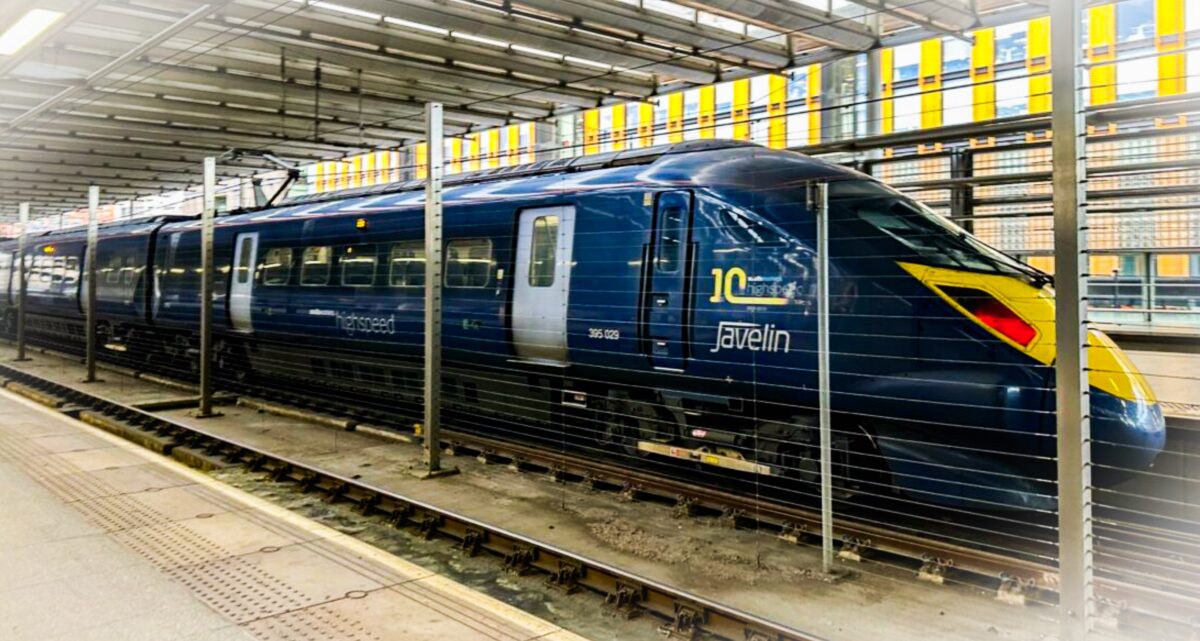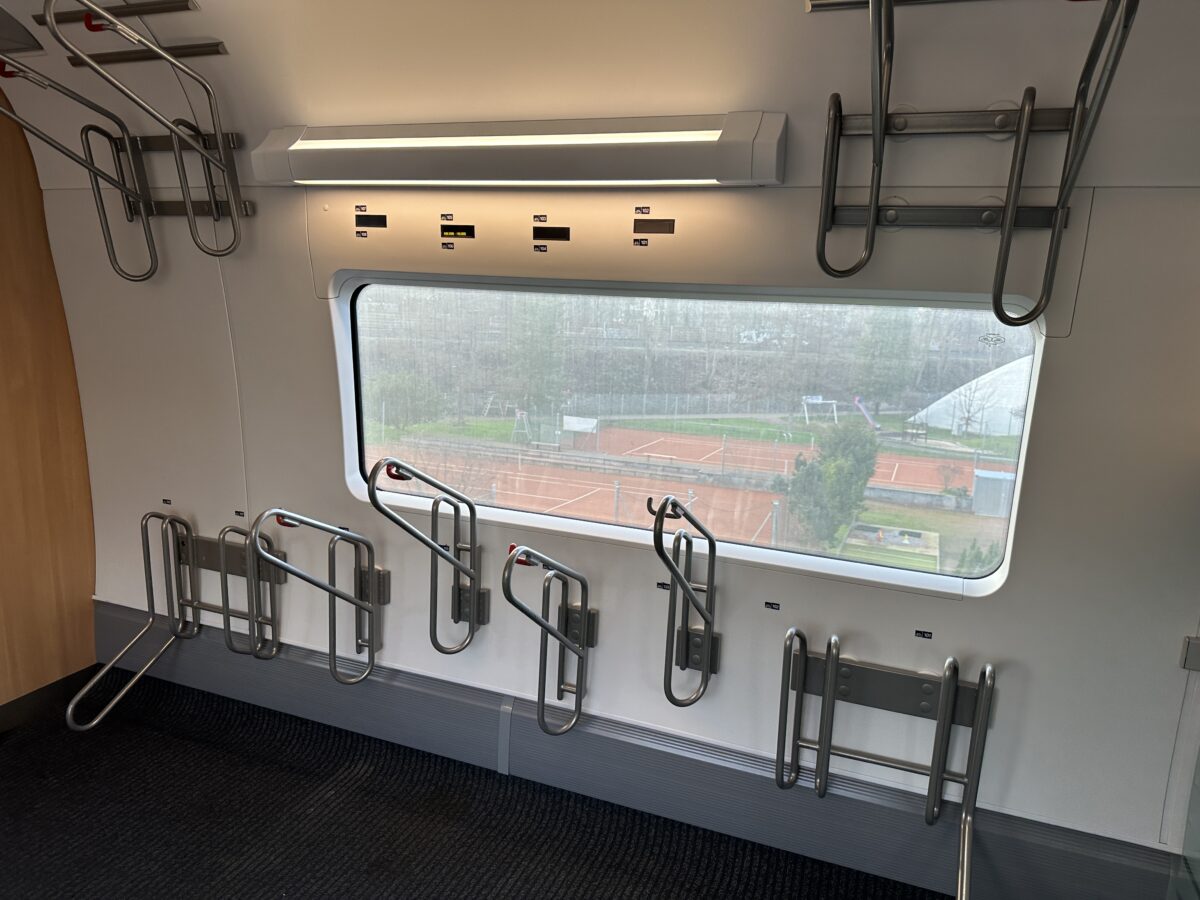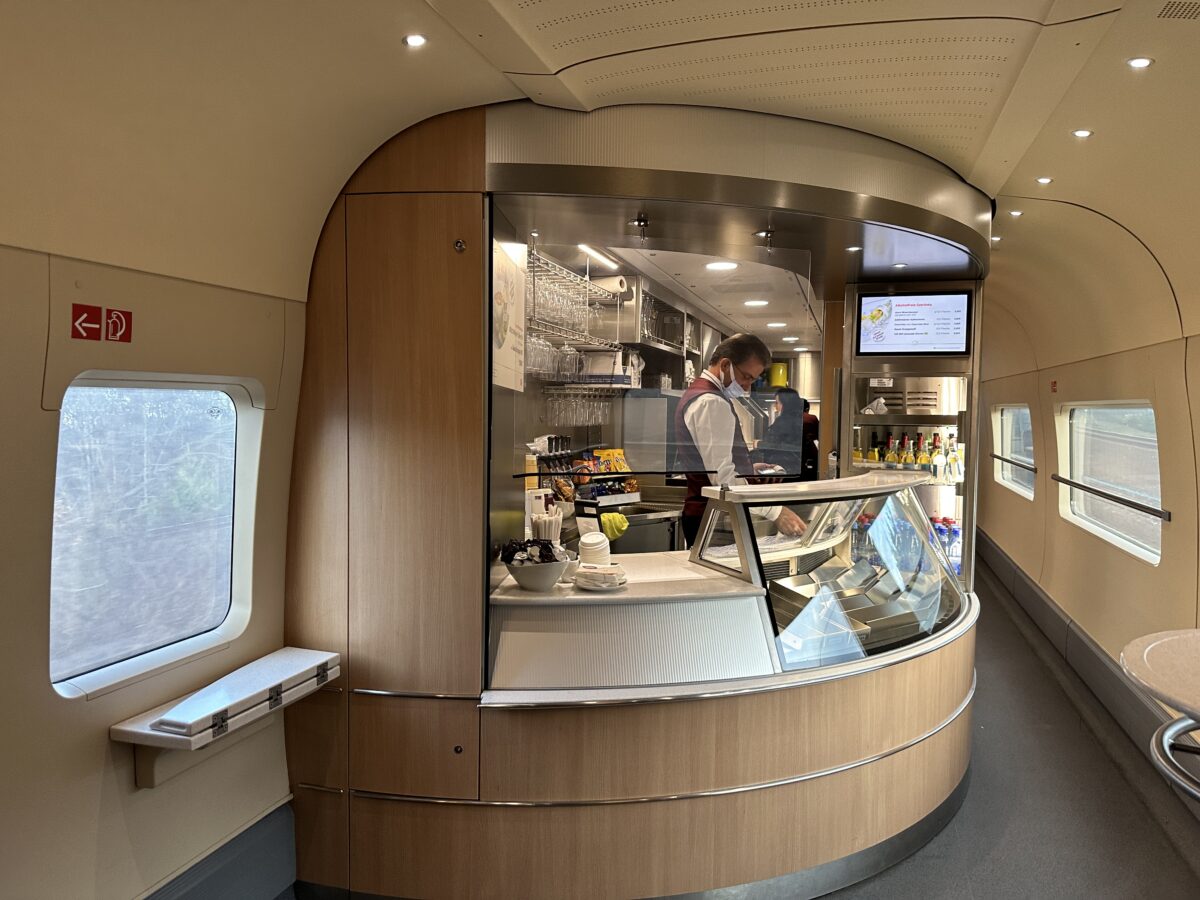
— This post is part of BikePortland Staff Writer Taylor Griggs’ trip through Europe. See previous dispatches here.
Don’t get me wrong, I’ve been very impressed with the bike infrastructure in the European cities I’ve visited so far. But throughout my travels over the last couple of weeks, I’ve realized that separated bike lanes and carfree streets — while lovely and quite enviable — aren’t actually the element of European transportation that could convince me to try to permanently emigrate abroad. The rail system, on the other hand? That’s a different story.
I’ve expressed my enthusiasm for Amtrak on BikePortland before, and I’ll do it again: I’m charmed by American rail travel. I like its quirks and the sense of community it fosters, and I’ve seen some of the most memorable, awe-inspiring natural scenery of my life from the Amtrak observation car. But after seeing what dignified train travel looks like, I have to say that some of that affection has diminished…or at least evolved a bit.


It’s not entirely fair to compare intercity train travel in Europe and the United States because the European countries have a clear geographical advantage: their cities are actually close together. The entire continent of Europe, including western Russia, is just slightly bigger than the lower 48 states in the U.S., and many of the major capitals — London, Paris, Brussels, Amsterdam, Berlin, Vienna — are located fairly close together, at least by American standards.
But it’s not just about city proximity. Even if we can’t pick up and move the major American cities closer together, there’s still a lot we can do. In Europe, trains actually come on time, are scheduled multiple times a day and are fast. Many European countries have invested in high-speed rail. The trains stop in small towns, not just big cities, making it possible for people living in the countryside to travel without a car. Taking the train is the fastest and most efficient option for getting from one city to another a lot of the time, and countries like France are making it mandatory to go by rail instead of flying in an effort to combat carbon emissions.
Earlier this week, I traveled from Copenhagen to Paris, which took about 13 hours on the train altogether (I made a stop in Hamburg to split up the trip). These cities are about the same distance apart as Portland and San Francisco, but a nonstop Amtrak trip to the Bay Area from Portland takes about 19 hours — much longer than it would take to drive.
Imagine if we had high-speed rail! Following in the footsteps of my colleague Lisa Caballero, I rode France’s TGV high-speed rail earlier this week and was similarly struck by how far behind we are in the U.S. It is exciting to see the advances in discussions for ultra-high speed rail in the Pacific Northwest and I am also glad Amtrak is lowering fares for travelers on the Cascades route. But it’s depressing to think about how long it will take these projects to come to fruition, if they do at all.
And then there are the delays. U.S. passenger rail is dictated by the freight industry (which has a surprisingly large grip on the entire American transportation sector, including locally). Amtrak and Union Pacific — the rail company that hauls freight all over the American west — have to share the rails, which means that they’re constantly battling for access to the tracks.
Even though passenger rail is supposed to have preferential right-of-way over freight, Amtrak trains are constantly held up by Union Pacific, sometimes for hours on end. (A passenger train was just stuck in rural South Carolina with limited food supplies for more than 20 hours last week.) After seeing how people in Europe react when their train is a few minutes late (which has really not been common — usually they are exactly on time), it’s seems all the more ridiculous to me that we put up with this kind of thing in the U.S.
Of course, this past holiday season’s airline meltdown showed that all modes of transportation are subject to failure at times. But the federal government has never paid as much attention to passenger rail as they have to subsiding airlines, and it’s extremely obvious.
I love traveling, but I also feel it’s my responsibility to limit my personal carbon emissions as much as possible. Our planet cannot sustain the amount of air travel Americans are doing, but with the system that we have it’s also unrealistic to expect much else.
I will keep riding Amtrak for the views, the charming experience and to avoid flying. But based on past experiences, like one egregious situation in which I was stuck on a train in the desert for 15+ hours, missed my connecting train and had to shell out $200 for a last-minute one-way flight, I know I can’t do it if I have anywhere I need to be in a timely manner. So I will continue to be one of a few Americans who takes the train. And although I’m fine going it alone from time to time, I’d really prefer others were able to join me on this one.



